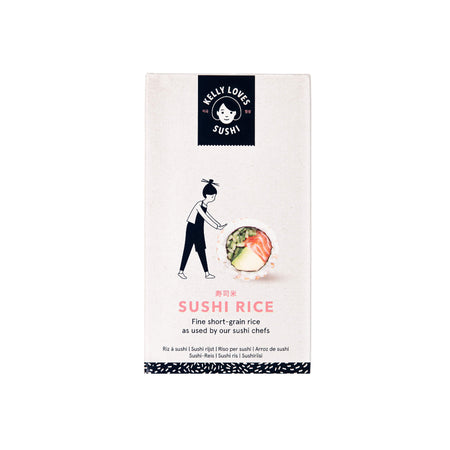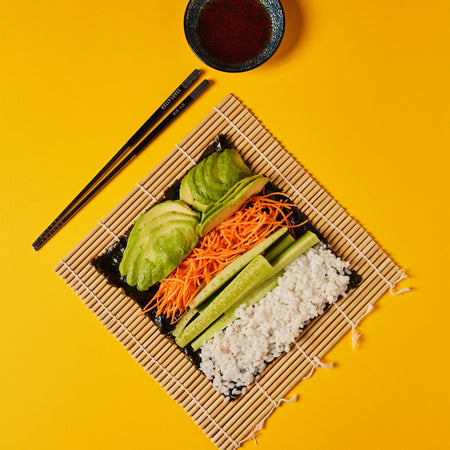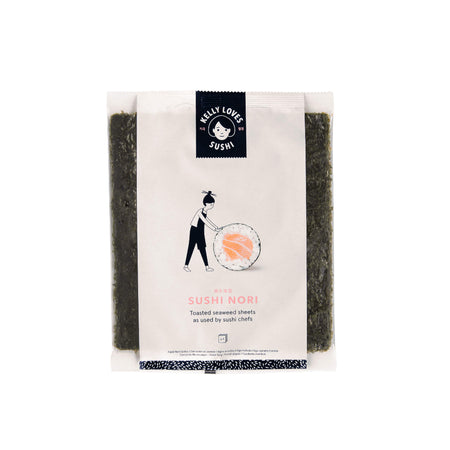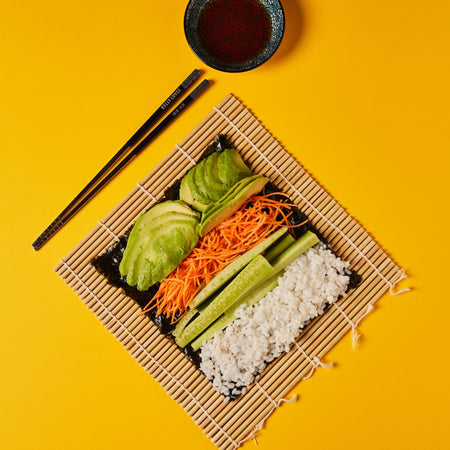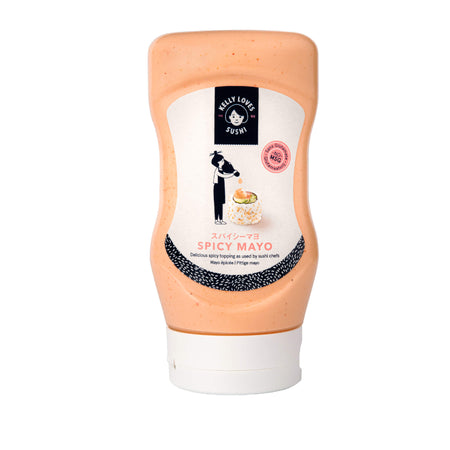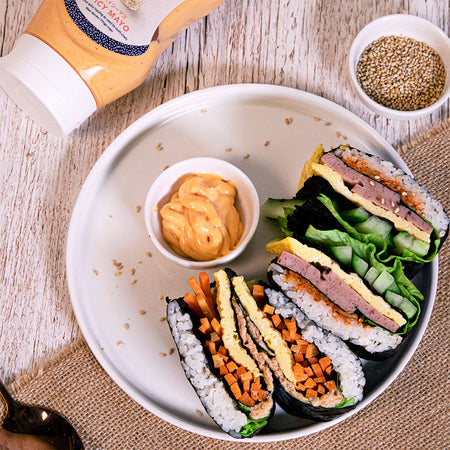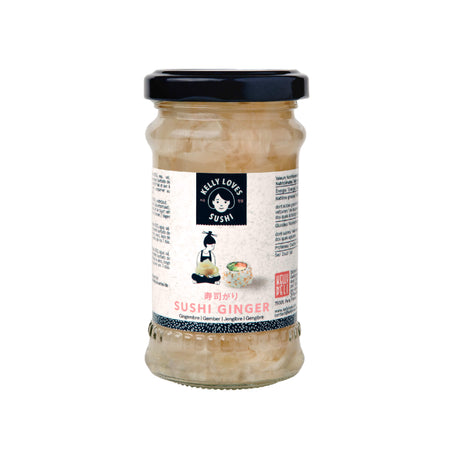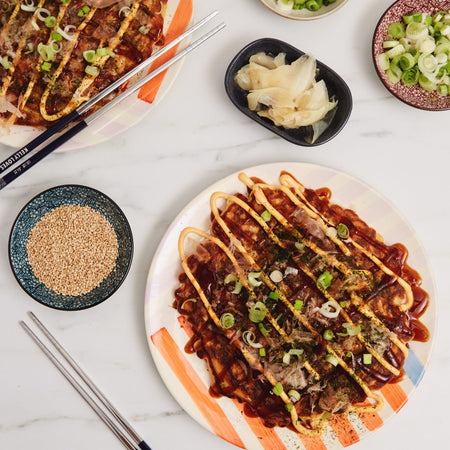Korean food vs Japanese food: what's the difference?

What is Korean food?
Korean food is the result of cooking using Korean culinary arts, influenced by Korean culture, traditions and ingredients. The most famous Korean cuisine includes global sensations such as: Korean BBQ restaurants (meat is grilled at the dining table), kimchi (fermented cabbage with seasoning) and kimchi ramen (a popular Korean ramen noodle soup). There are also many firm favourites among Korean food lovers such as: colourful bibimbap (a rice bowl) and juicy bulgogi (marinated and Korean BBQ grilled beef, often wrapped in lettuce leaves).
The varying climate in Korea means that Korean dishes evolved to accommodate it. The climate is very cold in winter and very hot in summer. The fermentation process was developed by Koreans to keep supplies of food through the freezing winters and hot summers. The unique fermentation process which makes various jang (fermented soy products) is typical of authentic Korean food.
Korean ingredients are also diverse due to a varied landscape. The landscape includes fields and mountains, surrounded by sea. But Korean food also comprises various common elements: bap (cooked rice), kuk (soup), banchan (Korean side dishes) and jang (sauce). Basic Korean seasoning includes: vinegar, jeotgal (fermented fish), kanjang (fermented soy sauce) and gochujang (chilli paste).
What is Japanese food?
Japanese cuisine covers all traditional foods of Japan with a focus on seasonal ingredients. There is so much food in Japan to try besides sushi!
Traditional Japanese food is known as ‘washoku’ and it’s extremely highly regarded across the world for its heritage, tradition and innovation. Tokyo has the highest number of Michelin-starred restaurants in any city in the world.
Although the principal ingredients in Japanese cuisine are centred around rice, vegetables, grains, fish, shellfish and seaweed, there are thousands of incredible dishes displaying incredible variety. There are as many as 4,200 species of fish used to create Japanese meals. Seafood can be battered as tempura, grilled or served raw in sushi and sashimi.
Staple foods in Japanese cuisine are rice, noodles (such as udon and soba) and miso soup. But there’s a multitude of Japanese dishes, sweets, drinks and desserts that are a multi-sensory experience, an explosion of different textures, flavours and aromas.
What is the difference between Korean and Japanese food?
Preparation and cooking method
Japanese food is usually prepared and cooked unseasoned or left raw. The cooking methods use little oil. Instead, cooking the food involves lots of water for steaming, stewing or boiling. A sharp knife called ‘santoku’ is used as a general kitchen knife. Santoku means ‘three virtues’ or ‘three uses’: chopping, slicing and cutting. And as fish is an important ingredient in Japanese cuisine, chefs use special knives to prepare different types of fish.
Dashi (a family of stocks) is often central to Japanese cooking, used as a base for many types of dishes (for example, ginger miso soup). It is prepared from kelp (konbu) or small pieces of sliced katsuobushi, also known as dried bonito or bonito flakes (simmered, smoked and fermented skipjack tuna).
Korean cooking on the other hand is very complex with lots of condiments used and dishes being created over days. Meats are marinated and spiced before the food is cooked. Many side dishes are quick and easy to make, but making multiple little dishes for every mealtime can be very time-consuming.
Taste
The traditional Japanese meal follows the philosophy of ‘one soup, three vegetables’. Meals are clean and uncluttered with a focus on the natural flavour of the food which is paramount. Seasoning is kept to a minimum, and when something is seasoned, it is to enhance the natural flavours after the food has been cooked (such as soy sauce or wasabi when eating sushi).
Korean food uses lots of spices and sauces; they play a prominent part in the flavour of each dish. Many Korean dishes use chilli pepper to season, but Japanese food rarely does. Japanese food in general is much less spicy than Korean food.
Health
Japanese food is often hailed as being uber healthy. Most Japanese food is eaten raw or grilled, so cooking in oil isn’t as common. And if the umani is sensitively controlled, dishes can be low in calories and salt as well as high in nutritious value. Japanese food also uses fewer animal products compared to Korean food. Korean dishes use more meat. Japanese food also tends to use less sugar. However that isn’t to say that Korean food isn’t healthy — it’s brimming with colourful fruit and vegetables — like any country’s cuisine, there are healthy options to choose from.
Eating etiquette and rituals
Koreans have dining etiquette to adhere to which focuses on how to be polite and well-mannered, but they’re much more relaxed when compared with Japanese eating rituals. Here are some examples of Korean eating etiquette:
- Pass dishes to others with both hands.
- Eat carefully and quietly (no slurping, unlike Japanese etiquette on how to eat ramen!)
- Wait for the oldest person you’re eating with to pick up his/her chopsticks first.
- For a business meal, people are seated based on social ranking with the youngest or lowest-ranked nearer to the door (and the oldest/ senior ranking people are seated first).
- Pour drinks for others and let them pour your drink.
Whereas Japanese food rituals are complex and strictly adhered to. This includes:
- Cooking food in a particular, traditional way.
- Greeting staff and the chef before eating.
- Putting cutlery back in a specific place at the table when finished.
Sushi
The difference between Korean and Japanese food often comes into focus when comparing Japanese sushi to Korean kimbap. Korean kimbap doesn’t use wasabi as you would use for sushi, but instead, gochujang is used as an alternative. Kimbap also doesn’t contain any raw fish as sushi does. And Korean kimbap uses more affordable and accessible ingredients, like luncheon meat, kimchi, cheese and ham.
What are the similarities between Korean and Japanese food?
Korean and Japanese food are very different but they also have some similarities.
Ingredients
Korean and Japanese cuisine both use fresh ingredients sourced from local markets. Soy sauce, rice and pickles are staples of both cuisines. Rice is served at every meal: used to make sushi or kimbap or steamed to go with different dishes. Both Japan and Korea also enjoy fermented foods: in Korea, kimchi is their stand-out fermented dish and in Japan miso, natto and umeboshi are popular fermented dishes.
As you would expect with neighbouring countries, there are similarities in their cuisine, but the most exciting thing for foodies are the differences and the unique customs and traditions. With such a variety of cooking methods and ingredients, we’ll be in the kitchen trying out the different dishes for quite some time! Or if you know someone who loves to try new things, our Asian food gift sets make the perfect present!
